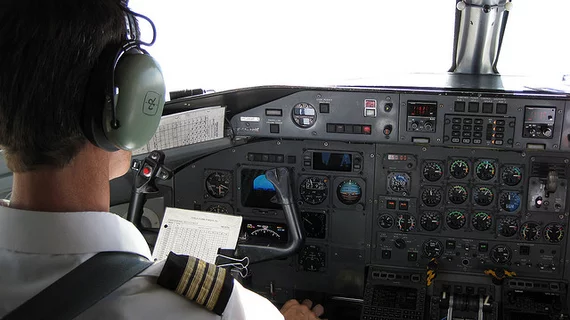Cognitive imaging of pilots in flight reveals cloudy decision-making
Researchers from Drexel University and experts in aerospace engineering at ISAE-SUPAERO in Toulouse, France, found aircraft pilots commit more errors operating a real aircraft than a flight simulator by measuring brain activity using a portable, cognitive imaging system.
"The efficiency and safety of human-machine systems depend on the cognitive workload and situational awareness of human operators," said co-author of the study Hasan Ayaz, PhD, an associate research professor at Drexel University, in a prepared statement.
Using functional near-infrared spectroscopy (fNIRS), the neuroergonomic system, worn like headband, accurately measures brain activity while the subject moves around freely, according to the study published May 17 in Frontiers in Human Neuroscience.
The fNIRS system monitors blood oxygenation changes in the prefrontal cortex, which is responsible for problem solving, split second decision-making, memory and impulse control, the researchers wrote.
In other words, the tool measures the "brain at work," wrote lead author Frédéric Dehais, PhD, a professor at ISAE-SUPAERO and expert in flight safety, in a prepared statement.
Dehais and colleagues split 28 pilots into two groups: those who flew a real aircraft and those who operated a flight simulator. Both groups were monitored for brain activity while completing memorization tasks varying in difficulty from pre-recorded air traffic control instructions.
The researchers found that pilots in real flights made more errors and had higher activation in the prefrontal cortex than pilots in the stimulator, according to the researchers.
"The contributions here are two-fold," the researchers wrote. "First, we demonstrate the feasibility of passively monitoring cognitive load in a realistic and complex situation (live piloting of an aircraft). In addition, the differences in performance and brain activity between the two experimental conditions underscore the need for ecologically valid investigations."
Dehais and his team believe their study could help create new opportunities for researching aviation parameters and improving aircraft design.

